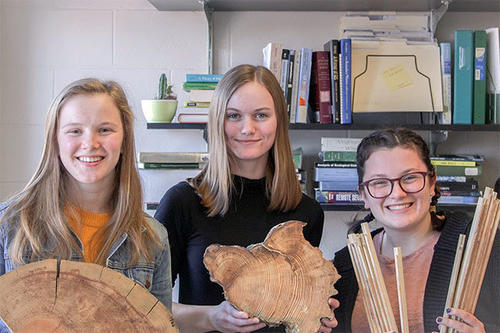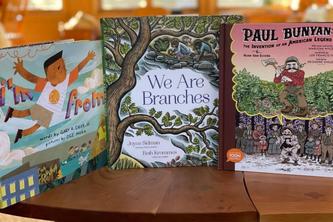
“If students want jobs when they graduate, it's helpful to have some kind of meaningful experience,” says Associate Professor Kurt Kipfmueller, who has taken this approach as a teacher and as a researcher. Geography undergraduates Cait Bell, Madison Pettersen, and Suzanne Scotty are reaping the benefits of his philosophy.
The three have been working part-time in Kipfmueller’s lab, gaining experience using everyday software like Excel and in more nuanced projects like cataloging field samples.
Currently, the students are using tree ring samples to analyze what has happened throughout a forest’s lifetime, including fire history and invasive species (read more about this research).
As part of this project and others, the three students archive tree cores, measure ring widths of cores, conduct skeleton plotting (a form of dating materials), and use other professional-level lab equipment. In addition to the lab experience, Bell, Pettersen, and Scotty work with other researchers.
“Getting to interact with faculty members and people within the department is definitely beneficial,” says Pettersen.
Kipfmueller gives the students a lot of independence in the lab. He lets them know: “You have to figure out how to do it. I'll give you feedback, but I want you to work with it and figure it out.”
As they bounce around among projects, the students get their hands on all parts of the research, with Kipfmueller serving as mentor.
By finding answers on their own, the students develop problem-solving skills and put their coursework to good use.
“I learn things in class that I can use here and learn things here that I can use in class,” says Bell. “Working here has opened my eyes to a whole different side of geography that I just wouldn’t have considered before.”
One project the students are working on is exploring the theory that Ojibwe people burned landscapes to improve blueberry harvests.
This geographical research could play a critical role in uncovering and preserving a history that might otherwise be forgotten, Scotty says. “We’re uncovering history from 100 plus years ago, not only for us, but for other communities.”
-------
- Categories:
- Arts and Humanities





